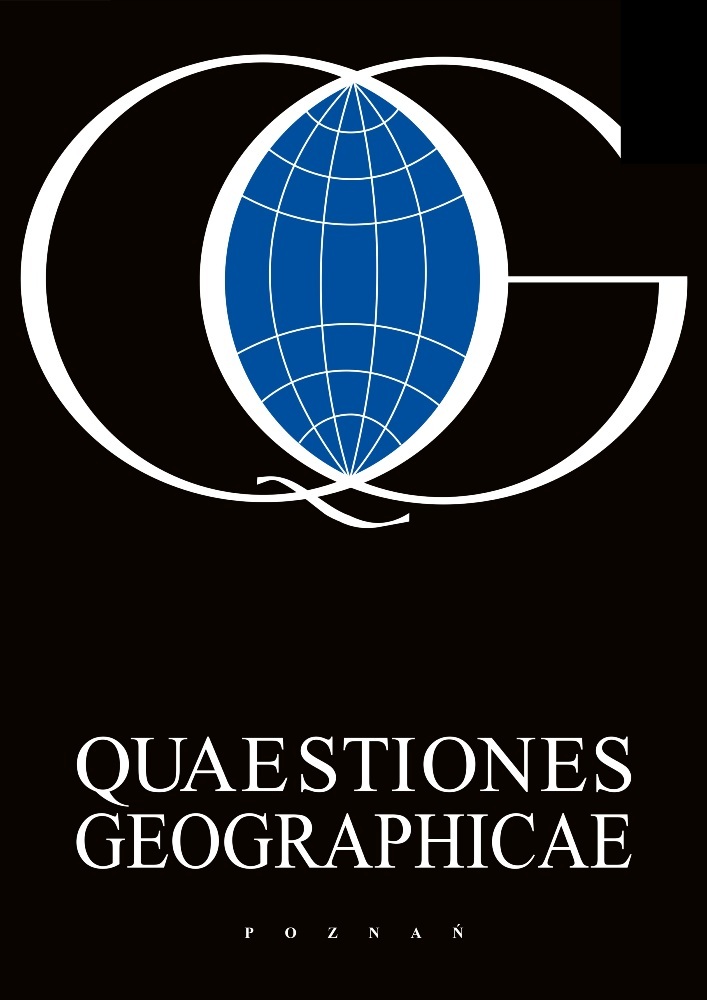Abstract
Macrofossil analysis and radiocarbon dating were used to determine the age, composition and succession pattern of organic-rich deposits infilling oxbows and flood basins in the Rivers Kłodnica, Odra and Osobłoga valleys (southern Poland). Both detrital sediments representing the aquatic or terrestrial environments as well as five types of peat accumulated in amphibious or peatland conditions have been identified in cores analyzed. Studies have shown that an accumulation of organic-rich deposits was commonly initiated by terrestrialisation and was typically occurred under eutrophic conditions. In such circumstances, deposit sequences usually begin with aquatic detrital sediment (gyttja), or possibly brown-moss or reed peat. These deposits normally pass into sedge-reed peat and then alder peat. If the accumulation of organic-rich deposits was initiated by paludification, alder peat appears in the lowest sections of the fens. In the upper parts of the sequences, apart from wood peat, organic deposits dominated by sedge remains are also present. The latter were accumulated, probably, as an indirect effect of human activities in the floodplains.
References
Brown A.G., 1996. Floodplain palaeoennvironments. In: Anderson M.G., Walling D.E., Bates P.D. (eds.), Floodplain processes. J. Wiley and Sons, Chichester: 95-139.
Dobrowolski R., Pidek I.A., Gołub S. & Dzieńkowski T., 2010. Environmental changes and human impact on Holocene evolution of the Horodyska River valley (Lublin Upland, East Poland). Geochronometria, 35: 35-47.
Kac N.J., Kac S.W. & Skobeeva E.I., 1977. Atlas rastitel’nych ostatkov v torfach. Nedra, Moskva: 371 p.
Kalicki T. & Zernickaya W.P., 1995. Paleogeography of the Vistula valley near Cracow based on sediments and palynology of the Alleröd paleochannel fill. In: Evolution of the Vistula river valley during the last 15000 years. P. V. Geographical Studies, Special Issue, 8: 9-18.
Mangerud J., Andersen S.T., Berglund B.E. & Donner J.J., 1974: Quaternary stratigraphy of Norden, a proposal for terminology and classification. Boreas, 3: 109-128.
Marek S., 1965. Biologia i stratygrafia torfowisk olszynowych w Polsce. Zeszyty Problemowe Postępów Nauk Rolniczych, 57: 1-305.
Nita M. & Wójcicki K., 2005. Record of Holocene vegetaion changes against a background of environmental conditions in the Kłodnica valley (southern Poland). Quaestiones Geographicae, 24: 63-73.
Pawłowski D., Kloss M., Obremska M., Szymanowski M. & Żurek S., 2012. Evolution of small valley mire in central Poland as a result of hydroclimatic oscillations. Geochronometria, 39(2): 133-148.
Rotnicki K. & Młynarczyk Z., 1989. Późnovistuliańskie I holoceńskie formy i osady korytowe środkowej Prosny i ich paleohydrologiczna interpretacja. Seria Geografia 43, UAM, Poznań: 76 p.
Starkel L., 2001. Historia doliny Wisły od ostatniego zlodowacenia do dziś. Monografie IGiPZ PAN, Warszawa.
Tobolski K., 1981. Preliminary results of macrofossil investigations in the paleomeander of the younger generation at Czmoniec. P. II. In: Kozarski S., Tobolski K. (eds.), Symposium “Palaeohydrology of the Temperatre Zone”. Guide-Book of Excursions: 57.
Tobolski K., 2000. Przewodnik do oznaczania torfów i osadów jeziornych. Wyd. Naukowe PWN, Warszawa.
Tołpa S., Jasnowski M. & Pałczyński A., 1967. System der genetischen Klassifizierung der Torfe Mitteleuropas. Zeszyty Problemowe Postępów Nauk Rolniczych, 76: 1-99.
Wójcicki K. & Kloss M., 2008. Makroszczątki roślinne w torfie w analizie paleośrodowiskowych uwarunkowań osadnictwa na przykładzie stanowiska Łane Małe w dolinie Kłodnicy. Studia Ecologiae et Bioethicae, 6: 449-460.
Żurek S., 1975. Geneza zabagnienia pradoliny Biebrzy. Prace Geograficzne, 110. Wyd. PAN, Wrocław.
Żurek S., 1993. Zmiany paleohydrologiczne w mokradłach. Przegląd Geograficzny, 64: 75-95.
License
This content is open access.
